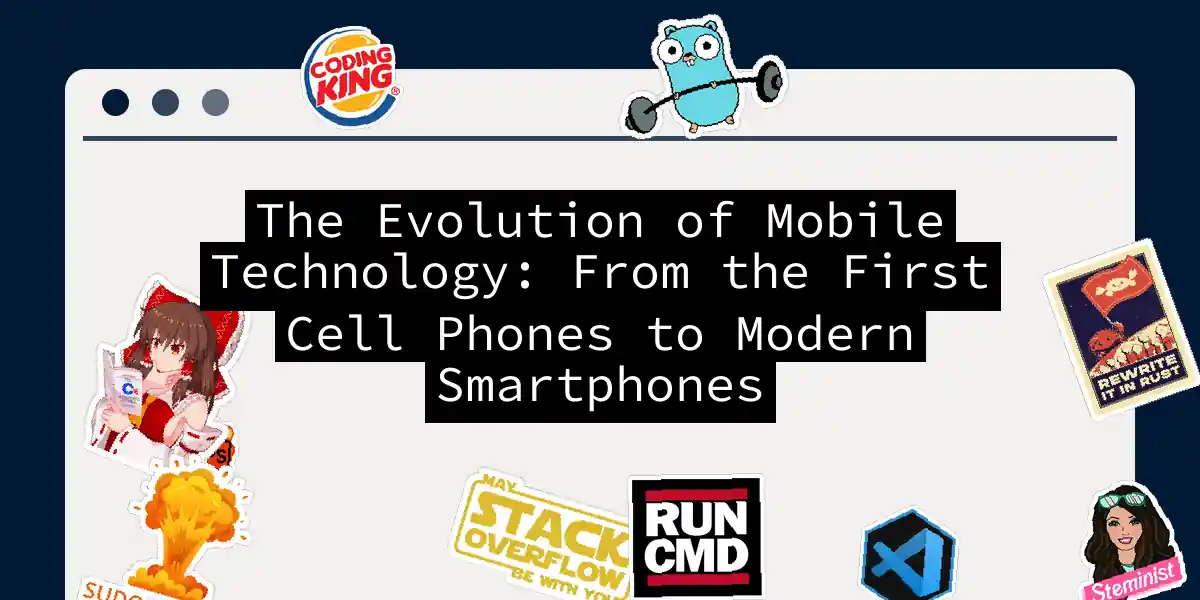The Dawn of Mobile Technology
Imagine a world where the only mobile device you had was a brick-sized phone that could barely make a call, and if you were lucky, it might last 30 minutes on a single charge. This was the reality in the early days of mobile technology. Let’s take a journey through the fascinating evolution of mobile devices, from those cumbersome first steps to the sleek, powerful smartphones we can’t live without today.
The First Mobile Phone
In April 1973, Martin Cooper from Motorola made the first public call on a handheld mobile phone, calling Dr. Joel S. Engel at Bell Labs. This device, though massive and limited, marked the beginning of a revolution. The first commercially available mobile phone, the Motorola DynaTAC 8000X, hit the market in 1983. It stood over 22.5 cm tall, weighed about 1.2 kilograms, and cost a whopping $4,000 – equivalent to around $10,000 today.
Early Mobile Devices and Applications
The IBM Simon and Early Smartphones
Fast forward to 1993, when IBM released the IBM Simon, often credited as the first smartphone. This device included features like a phone book, calendar, world clock, and even a calculator. It was a significant leap forward, showing that mobile devices could be more than just phones.
In the late 1990s, the first mobile applications began to emerge. These early apps were simple, such as calendars, calculators, and games like “Snake,” which became a cult classic on Nokia phones. These apps were built using platforms like Java ME and were known as “midlets”.
The Rise of Symbian and Other Early Operating Systems
The mid-1990s saw the introduction of the Symbian operating system, specifically designed for mobile devices. Symbian OS, first released in 1997, was a collaborative effort between Ericsson, Motorola, Nokia, and PSION. It became the dominant OS for mobile devices until the late 2000s.
Other notable operating systems of this era include Palm OS, introduced by Palm Inc. in 1996, and the BlackBerry OS, which integrated wireless email and became a staple for business users.
The Game-Changers: iPhone and Android
The iPhone Revolution
2007 was a pivotal year with the release of the first iPhone by Apple. Steve Jobs unveiled the iPhone as a revolutionary device that combined a mobile phone, an iPod, and an internet communications device into one product. The iPhone introduced a multi-touch interface and app store, which transformed the way people interacted with their mobile devices. Although the initial iPhone did not allow third-party apps, the subsequent release of the App Store in 2008 opened the floodgates for developers.
The Rise of Android
In 2008, Google launched Android, an open-source mobile operating system that quickly gained popularity due to its flexibility and the ability to install apps from various sources. Android provided developers with more freedom and opportunities to create unique and innovative applications. The first Android device, the T-Mobile G1, was released in October 2008.
Modern Mobile Technology
App Stores and Cross-Platform Development
The introduction of app stores like Apple’s App Store and Google Play Store in the late 2000s and early 2010s revolutionized how users discovered and installed apps. This period also saw the rise of cross-platform development tools such as Xamarin, React Native, and Cordova, allowing developers to create apps that could run on multiple platforms with minimal code duplication.
Contemporary Trends
Today, mobile technology is more advanced than ever. Smartphones are equipped with powerful processors, high-resolution displays, and advanced cameras. The app ecosystem is vast, with millions of apps available for everything from social networking and banking to health and fitness, travel, and entertainment.
Conclusion
The journey from the first cumbersome mobile phones to the sleek, powerful smartphones of today has been nothing short of remarkable. Each step, from the introduction of the first smartphone to the revolution brought by the iPhone and Android, has paved the way for the sophisticated mobile technology we enjoy today.
As we continue to push the boundaries of what is possible with mobile devices, it’s exciting to think about what the future holds. Will we see even more integrated AI, augmented reality becoming mainstream, or perhaps entirely new forms of interaction? One thing is certain: the evolution of mobile technology will continue to shape our lives in ways we can only begin to imagine.
